Surprisingly unstoried streets of Winnipeg A DIY tour through the curious, and curiously unrecorded, inspirations of our roads, routes and avenues
Read this article for free:
or
Already have an account? Log in here »
To continue reading, please subscribe:
Monthly Digital Subscription
$0 for the first 4 weeks*
- Enjoy unlimited reading on winnipegfreepress.com
- Read the E-Edition, our digital replica newspaper
- Access News Break, our award-winning app
- Play interactive puzzles
*No charge for 4 weeks then price increases to the regular rate of $19.00 plus GST every four weeks. Offer available to new and qualified returning subscribers only. Cancel any time.
Monthly Digital Subscription
$4.75/week*
- Enjoy unlimited reading on winnipegfreepress.com
- Read the E-Edition, our digital replica newspaper
- Access News Break, our award-winning app
- Play interactive puzzles
*Billed as $19 plus GST every four weeks. Cancel any time.
To continue reading, please subscribe:
Add Free Press access to your Brandon Sun subscription for only an additional
$1 for the first 4 weeks*
*Your next subscription payment will increase by $1.00 and you will be charged $16.99 plus GST for four weeks. After four weeks, your payment will increase to $23.99 plus GST every four weeks.
Read unlimited articles for free today:
or
Already have an account? Log in here »
Hey there, time traveller!
This article was published 05/03/2023 (1021 days ago), so information in it may no longer be current.
Ever been driving or walking down a street in Winnipeg, or just looking at a local map, and wondering, “How did this street get such a weird name?”
As it turns out, that question can sometimes be answered, and other times not. With Winnipeg lacking any form of numbered-street system, there’s more room for commemorations and oddities, but also a greater chance that a reason for a street name is lost to history, was never recorded to begin with, or doesn’t have one at all.
“I’ve lived in cities that have numbered streets, I’ve lived in cities that have named streets,” says Gordon Goldsborough, Manitoba Historical Society head researcher and webmaster, in a recent phone chat.
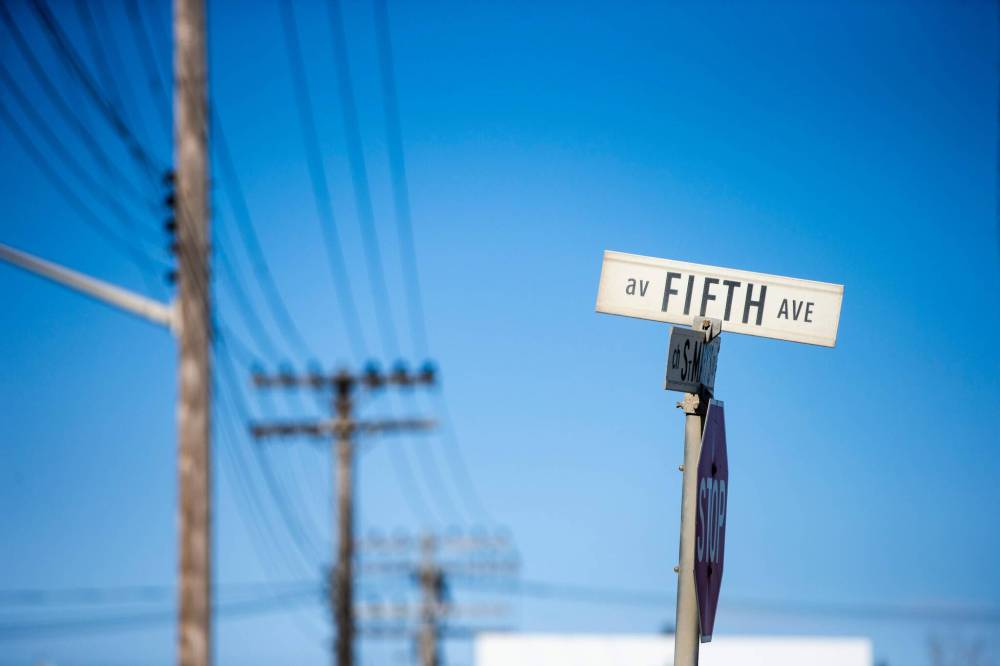
MIKAELA MACKENZIE / WINNIPEG FREE PRESS
Winnipeg is famous for having resisted numbered streets, but Glenwood has a Fifth Avenue.
“Although I admit having numbered streets makes it easier for people who aren’t familiar with the city, for those who do live in the city, I think it’s completely sterile. I would far rather have a street that is named for something in the history of the community,” he continued.
Many streets are named after prominent early citizens who have been mostly forgotten but whose names Winnipeggers unknowingly use on a daily basis. Others seem to be the result of a planner or developer having fun with a theme, or just choosing a name at random.
When asked who decides how a street got its name in Winnipeg’s early days, Goldsborough laughs.
“It’s almost the same random system that we have today. If you asked me that question about how do the streets today get a name, I would be hard pressed to answer that, too,” he says. He notes that in days of yore, the job would have mostly fallen to local politicians, rather than developers as it does now.
“This is the thing I find most surprising: There is no record of where the names of streets came from. I contacted the city and asked them and they said, ‘No, we have no records of that,’” Goldsborough says. “So the result is, a lot of people, to be blunt, just make crap up… I thought, perhaps naively, that there was some sort of central repository, but no, there never has been apparently and there even isn’t now.”
“I’ve asked (the city) on numerous occasions, ‘Why did this street get its name?’ And they have no clue,” he says.
Despite the obstacles, Goldsborough and the MHS maintain a living online compendium that tracks Winnipeg’s street names and their history when that history exists. It draws on a variety of resources, including a 1974 book entitled Mosaic of Winnipeg Street Names by scholar Jaroslav Bodhan Rudnyckyj.
The page also draws on a 1912 book entitled The Streets of Winnipeg, reporting by Winnipeg historians and journalists Harry Shave and Vince Leah, and ongoing research by the MHS. Goldsborough notes that in some cases, Rudnyckyj’s or others’ educated guesses have been refuted with new evidence.
These resources, combined with this author’s knowledge of street names that has come from being a lifetime resident, and his habit to scan Google Maps looking for funny stuff, provide plenty of concrete answers, but also some mystery.
Strange names:
● Best Street: Not a brag about it being the top street in the city, but rather named for medical researcher and scientist Charles Best, a co-discoverer of insulin. Best worked as an assistant to Dr. Charles Banting, who also has a drive named in his honour.
● Burning Bush Bay: One of the street names Goldsborough finds amusing. This bay in Windsor Park is in a cluster of bays whose names start with “B”, and the neighbourhood in general has street names clustered by first letter.
● Cockburn Avenue: Refraining from any sophomoric jokes, most Winnipeggers know it’s pronounced “Coe-burn.”
● Easy Street: Is the world but a treat for the Winnipeggers living on this street in River Park South? Easy Street has one section that bisects the other at a 90-degree angle, so it’s actually possible to stand at the intersection of Easy Street and Easy Street.
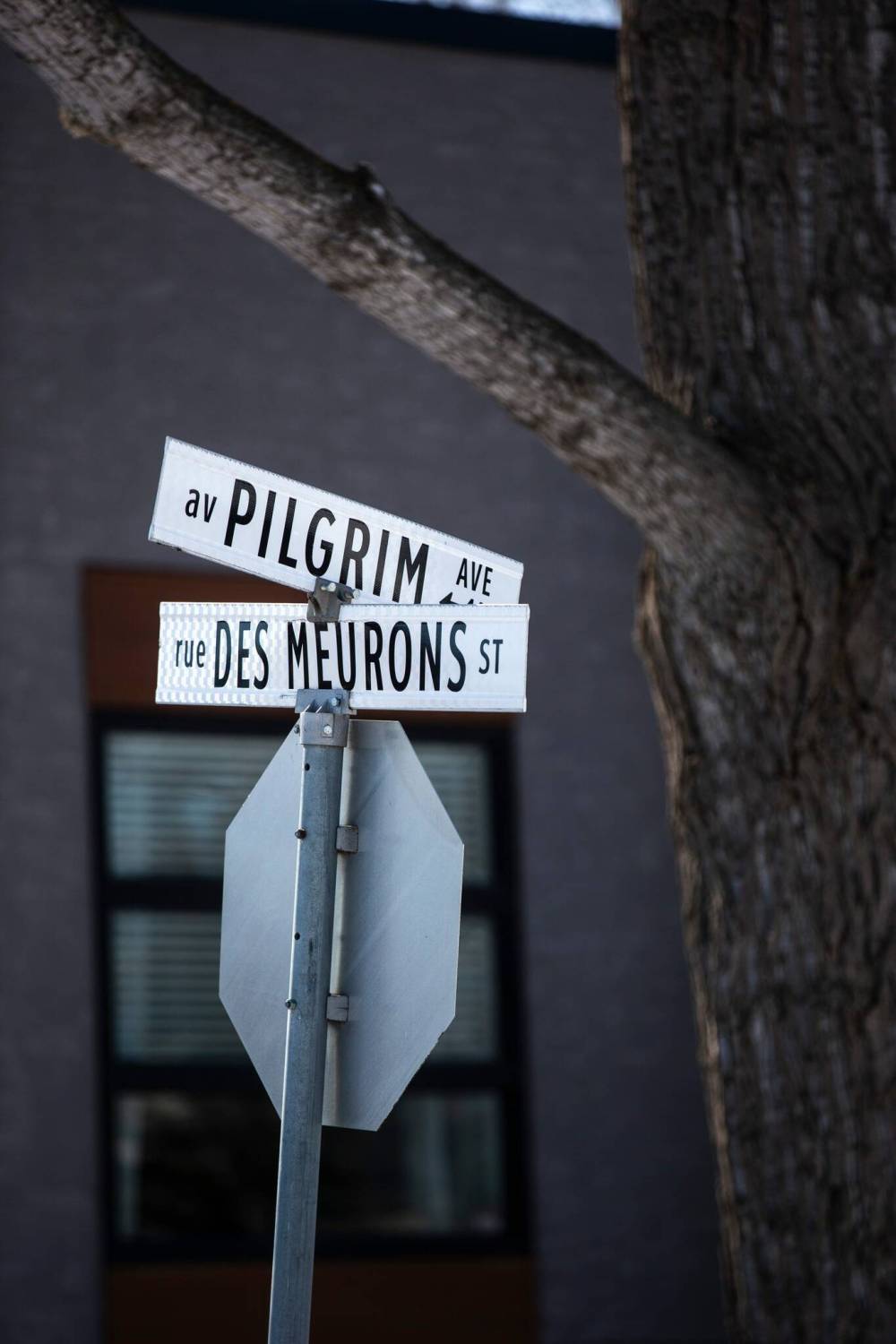
MIKAELA MACKENZIE / WINNIPEG FREE PRESS
Pilgrim Avenue at Des Meurons Street is a nod to decorator Ernest Pilgrim.
● Emo Avenue: A short avenue in Woodhaven Park that might elicit angsty thoughts, a desire to wear skinny jeans, and a sudden urge to listen to Weezer. Goldsborough has no idea how this street got its name.
● Essar Avenue: Not someone’s last name per se but this avenue in North Kildonan is a phonetic representation of the initials S.R., for Samuel Robert Henderson, also of Henderson Highway (with which Essar Avenue appropriately does intersect.)
● Good Street: Like Best Street, not a brag, but rather named for Dr. James Wilford Good. He was Winnipeg’s first physician to study the treatment of eye, ear, nose and throat diseases, served overseas during the First World War, and upon his death, bequeathed his estate to the Ninette Sanatorium and Children’s Home of Winnipeg.
● Fifth Avenue: Winnipeg is famous (and sometimes derided) for not having numbered streets. But in Glenwood, there is a Fifth Avenue, spelled out in letters as printed here, not with a number.
Goldsborough hadn’t heard of this one. “Wow, that’s neat,” he says.
● Frog Plain Way: This way in Riverbend, which shares its name with Frog Plain Park, is located where a 300-acre series of wet meadows — home to “thousands of Boreal Chorus Frogs,” the MHS notes — used to be. The area was named in 1812 by Red River settlers who “presumably heard the amphibians’ seasonal singing,” the MHS says.
The so-called “frog plain” was also the site of the Battle of Seven Oaks in 1816, which is referred to as The Victory of Frog Plain (la Victoire de la Grenouillère) by the Manitoba Metis Federation.
In the 1940s, the meadows were drained and turned into farmland, and in the 1990s, the farmland was replaced by the suburb that stands today.
● Ham Street: Has nothing to do with cured pork, but rather named for journalist, ad-man, and founding member of the MHS — George Henry Ham.
Ham was the managing editor of a conservative paper, the Winnipeg Times, which favoured the John A. Macdonald government, and later worked as the advertising manager of the Canadian Pacific Railway. With the CPR, he travelled extensively, and according to the MHS, visited every U.S. state.
He also served on Winnipeg city council in the 1880s.
● Jean-Baptiste Lavoie Place: Winnipeg’s longest street name at 26 characters, when including spaces and the designation of place. If not including the designation place, at 20 characters, it’s tied with Dr. Michael K. Grace (which is a way and is 24 characters when including spaces and designation).
● Lusted Avenue: Has nothing to do with a strong feeling of a certain desire, but is rather named after Thomas Lusted, who was a carriage-maker, baker and prisoner taken by Louis Riel’s provisional government at John Christian Schultz’s house in 1869.
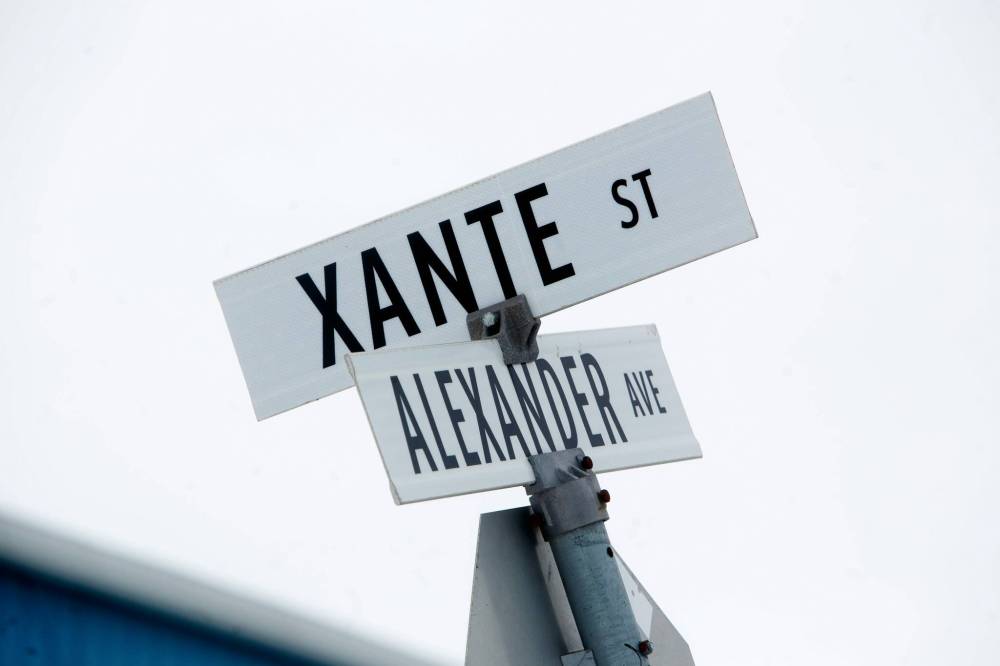
MIKE DEAL / WINNIPEG FREE PRESS
X marks Xante Street: It’s the only street in the city beginning with X.
● Park Lane Avenue: Another street name Goldsborough finds amusing. “Is it a lane or an avenue?” he asks of the lane/avenue in Tyndall Park.
● Pepperloaf Crescent: A third street name Goldsborough finds amusing. “Named for a SPAM-like meat product?” he asks of the Charleswood crescent.
● Pilgrim Avenue: Nothing to do with settlers landing at Plymouth Rock or early American history, but rather named for Ernest Pilgrim, an early Winnipeg interior decorator.
● Queen Street: Not named for any monarch, but rather for Winnipeg mayor John Queen, who served, according to the MHS, seven times between 1935 and 1942. Prior to his time as mayor, Queen was arrested on charges of sedition connected with the 1919 Winnipeg General Strike and sentenced in 1920 to one year in prison.
● Rh Way: The shortest-named street in Winnipeg, this way at the University of Manitoba, just across Chancellor Matheson Rd. from IG Field, is named for the research conducted by Dr. Albert (Bert) Friesen. Friesen led development on a treatment for Rh disease, according to the Mennonite Economic Development Associates. (Rh disease can occur in fetuses and newborns when antibodies in the mother’s blood cause red blood cells in the baby’s blood to be destroyed. It can occur when the mother and baby’s blood types do not match.)
● Sly Drive: Named for Thomas Sly, a dry goods merchant, postmaster and North Kildonan alderman.
● Smart Street: Named for James Smart, a Brandon-area politician who served in the Thomas Greenway provincial government (Greenway also has a street named in his honour).
● The Bridle Path: Someone had horses on the mind when naming a couple streets in Charleswood. Near The Bridle Path, there are Horseshoe and Citation bays; Citation was a champion thoroughbred who was the eighth winner of the American Triple Crown, accomplishing the feat in 1948.
● The Glen: This small street, located between Norwood and Glenwood on the western shore of the Seine River, is simply The Glen, with no other designation.
● Xante Street: The only street in Winnipeg starting with an X.
Goldsborough had no idea how this street got its name, either. For what it’s worth, Xante is a cognac-based liqueur flavoured with pear essence, but there are no other liquor-themed names around it. It’s also the name of a corporation that sells printers and workflow software.
Winnipeggers wouldn’t take a number:
For a brief period, Winnipeg bureaucrats attempted in vain to establish a numbered street system.
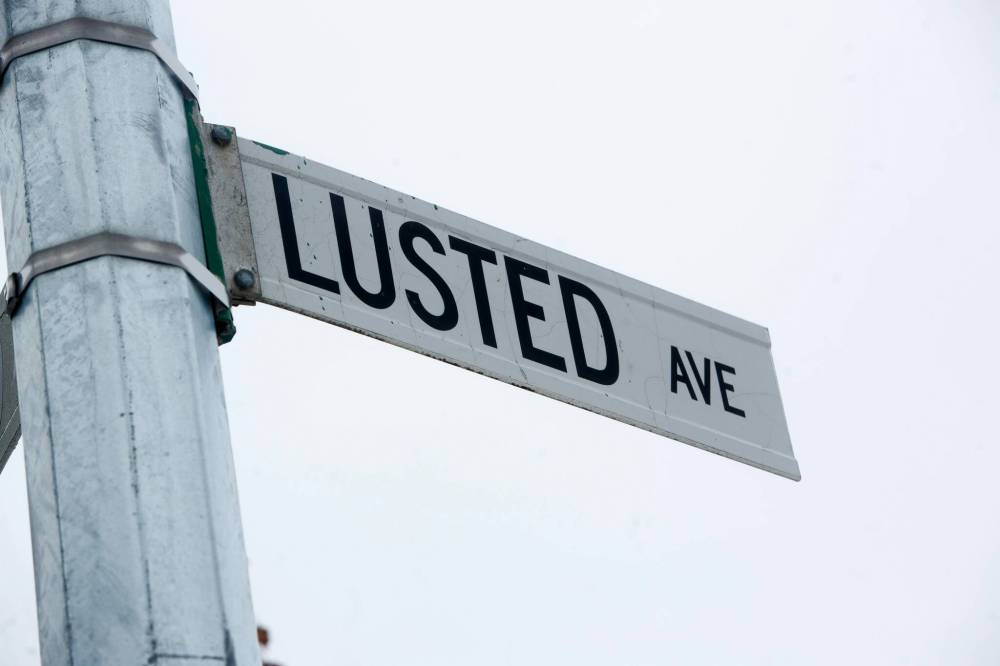
MIKE DEAL / WINNIPEG FREE PRESS
Lusted Avenue is named for Thomas Lusted, carriage-maker, baker, prisoner.
On March 31, 1891, Winnipeg city council “hurriedly pass a bylaw,” without consultation, to change the names of most streets west of Main Street to sequential numbers.
The will of Winnipeggers — or sheer stubbornness, perhaps — prevented this initiative from being a success.
Most businesses and residents disliked the idea and simply refused to acknowledge the newly numbered streets existed. The vast majority of letters mailed over the next few years still used the old names, as did newspaper advertisements, Goldsborough says. One letter carrier, according to the MHS, said that of 216 letters and cards he delivered, only five were addressed to streets designated by numbers.
“If it had started that way, people would have had less resistance,” Goldsborough says. “When someone just arbitrarily makes the decision for you, and especially you don’t remember these numbers, the majority of people just ignored them.”
“That’s why it failed, (citizens) just said, ‘To hell with you, we intend to keep using our names,’” he continues.
On Oct. 16, 1893, Winnipeg city council passed another bylaw reinstating the old names, with some being renamed again and duplicate names being eliminated.
Assorted oddities and observations:
Winnipeg has a Super Smash Bros. intersection in St. James, where Ness Avenue intersects with Kirby Drive; Ness and Kirby are two video game protagonists (Ness from the EarthBound series and Kirby from the series of the same name) and have both been featured in all five instalments of the legendary crossover fighting game series.
There are at least two examples of streets that spell the person’s name they’re commemorating incorrectly. The first is Jamison Avenue, named for Winnipeg mayor (1896) Richard Willis Jameson (correctly spelled with an E as printed here).
The second is Sanford Fleming Road, named for Sandford Fleming (note the additional D), a Scottish-Canadian engineer and inventor who designed Canada’s first postage stamp and engineered much of a few early Canadian railways.
“I have no explanation other than just somebody spelled it the way they thought it was spelled and didn’t bother changing it. Nobody cared, I guess,” Goldsborough laughs.
Winnipeg has two sets of Yale and Harvard avenues: one set in Crescentwood and another in Transcona.
This, and other redundant names, Goldsborough notes, are remnants of Winnipeg’s pre-Unicity days. Many neighbourhoods in Winnipeg were their own municipalities prior to 1972.
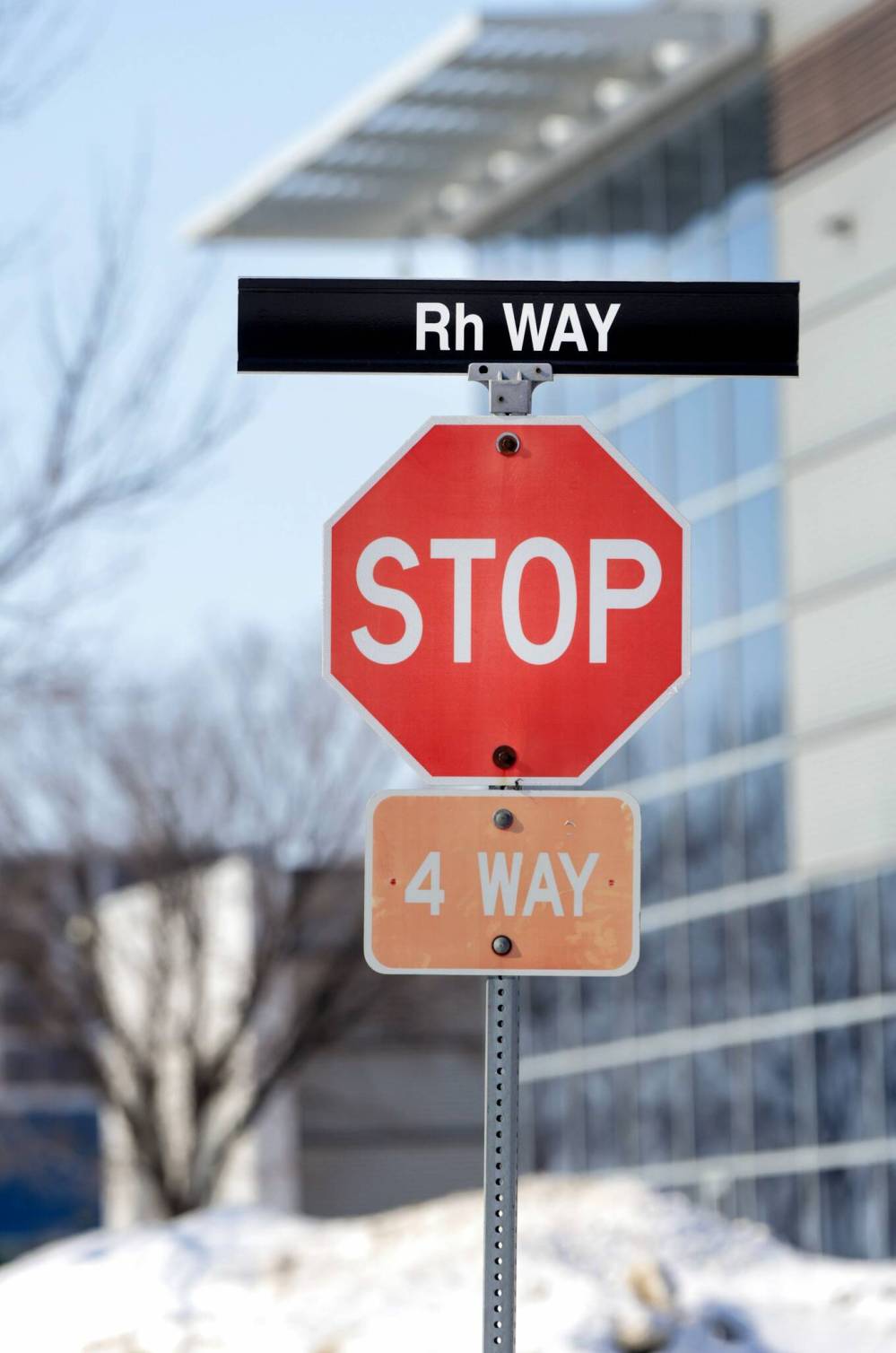
RUTH BONNEVILLE / WINNIPEG FREE PRESS
Rh Way holds the distinction of being the shortest-named street in the city.
In many cases, redundant names were removed post-Unicity, with the oldest street generally keeping its name, Goldsborough notes.
Three streets in Winnipeg are named after people who died on the Titanic in 1912. The first is Borebank Street, named after real estate agent John James Borebank; the second is Fortune Street, named after businessman Mark Fortune, also of the Fortune Block downtown; and the third is Hugo Street, named after businessman and real-estate broker John Hugo Ross.
In Tyndall Park, there are streets that go north from Selkirk Ave named alphabetically: Arrow Street, Brazil Street, Code Street, Dingle Street, Ellington Street, Featherstone Way, Gainsborough Cove, Huber Street, Inglis Street and King Edward Street.
Similarly, many know that a number of streets in the Exchange District and Centennial neighbourhood are of women’s first names. But not as many know they run alphabetically from east to west: Adelaide, Dagmar, Ellen, Frances, Gertie, Harriet, Isabel, Juno, Kate, Lydia, Olivia, Pearl.
“The thinking is that these are the daughters of noteworthy citizens,” Goldsborough explains. “If you say, ‘Well, which citizens were they?’ Well, unfortunately, there’s no record. All there is is just a vague reference.”
There are some non-alphabetic streets between them, such as Sherbrook. Those are the results of re-namings, Goldsborough says (for example, he says, there was a “Nena Street” that was eliminated.)
Fans of the 1990s and 2000s animated series Hey Arnold! may be chuffed to know that in Riverview, Hay Street intersects with Arnold Avenue near Churchill High School.
In Westwood, there are a number of streets named after poets and writers: Aldrich Avenue, Browning Boulevard, Byron Bay, Carlyle Bay, Carroll Road, Frost Avenue, Leacock Avenue, Robert Service Bay, Shelley Street and Wordsworth Way.
Some streets have unique designations, including Cercle Molière, Kinsbourne Green, Millwood Meadow, Southlawn Stroll,and Craglea and Crittenden Corners.
declan.schroeder@winnipegfreepress.com
History
Updated on Saturday, March 18, 2023 9:08 AM CDT: Fixes typo

